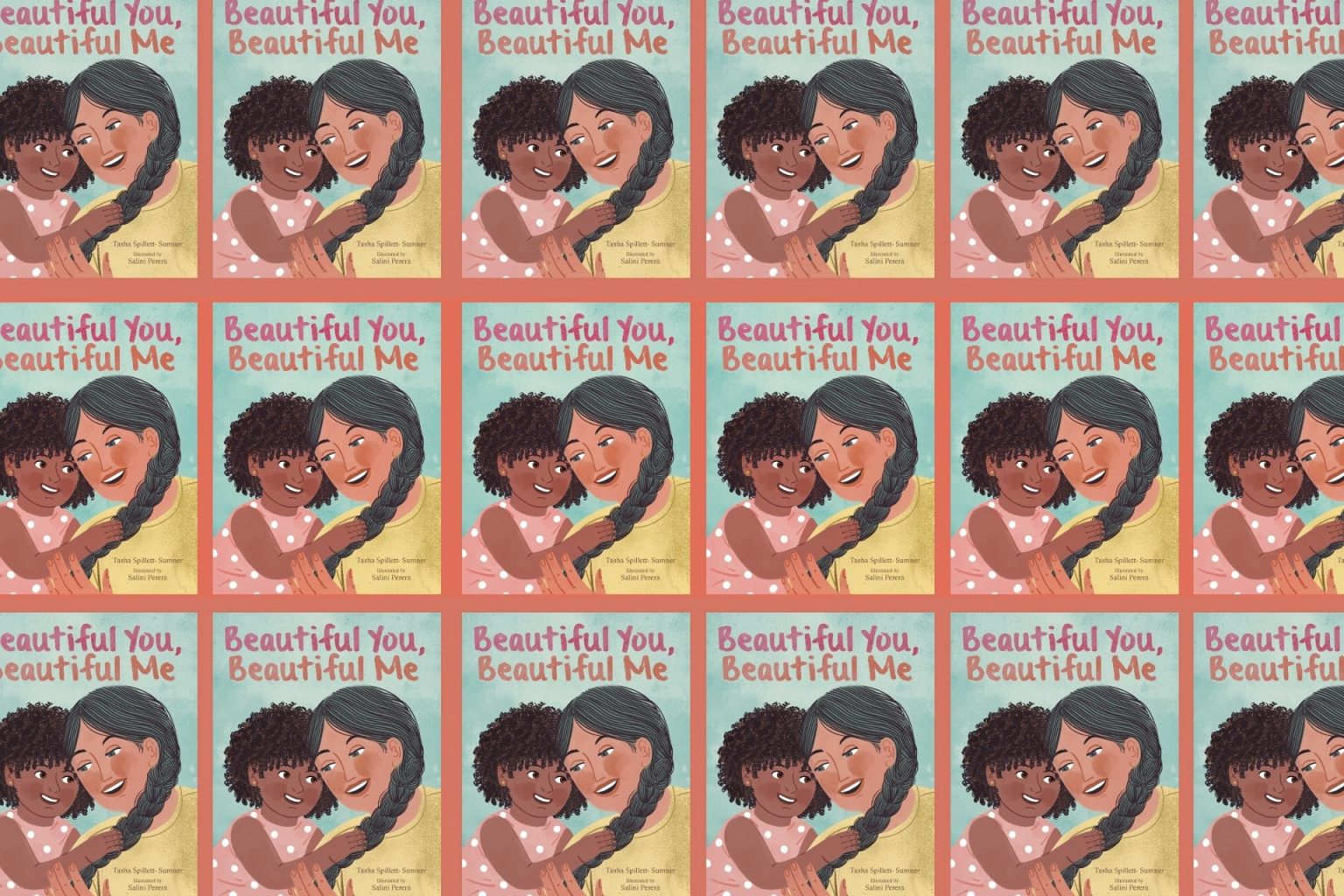Walk into a the children’s section of your local bookstore and you’ll no doubt notice a greater focus on ethnic diversity in recent children’s books. More and more, publishers are showing children characters in picture books that better represent the multicultural society in which we live. Noticeably lacking, however, are books featuring multi-racial children and in particular, books featuring children of indigenous backgrounds.
Tasha Spillett-Sumner is a Manitoban educator, poet and New York Times bestselling author of Nehiyaw (Cree) and Trinidadian descent. She draws inspiration for her writing from her cultural heritage as a multi-racial child. In her latest children’s book “Beautiful You, Beautiful Me”, Spillett-Sumner tells the story of a multi-racial child who struggles to find her identity when she suddenly realizes she doesn’t share the same physical features as her mother.
While Izzy has curly hair, she notices her mother has long dark straight locks. Izzy’s skin is the colour of chocolate while her mother’s is the colour of sand. As Izzy notices these physical differences, her mother encourages her to see her own beauty with a gentle lyric: “You’re part of me, and I’m part of you. I’m beautiful like me, and you’re beautiful like you.”
We spoke with author Tasha Spillett-Sumner about how she translated her own experience as an Afro-Indigenous girl into a children’s book about identity and belonging.
What inspired you to write this book?
My own journey as a multi-racial person led me to create this story. I am an Afro-Indigenous person. I think that when people come from multiple communities it can feel like you never wholly belong in any of them. My hope for the story is that it finds its way into the hands of children who like I did, seek connection and belonging.
As a multi-racial child of Trinidadian- Nehiyaw origins, when did you start to notice that you didn’t share the same physical characteristics as your mom?
I first started noticing the physical differences between my mom and I around the age of three. One of the first differences that I noticed was our hair. In my young mind, having long, straight hair was a mark of beauty and I struggled for a long time to see the beauty that springs up from my curls.
The phrase “You’re Beautiful Like You and I’m Beautiful Like Me” is repeated throughout the book. Is this something your mother used to say to you?
The sentiment of the words originates with my mom. She did everything she could to ensure that we were surrounded with positive representation from the communities we belong to. We had brown and Black dolls and many diverse books. Now that I have my own daughter, it’s important to me that she never question the inmate beauty that lives in her.
As a multi-racial child what questions did you have about your identity?
When I was a child I wanted to know why I didn’t share the same physical attributes as my mom. I also was curious about where my own features came from. My daughter asks me these questions now and I try to encourage that curiosity in her, while always reminding her of the ways in which we are connected.
I think all children just want to feel that they belong. For multi-racial children, how do issues of identity and belonging play out in their life?
Creating belonging is one of the most powerful forms of protection we can offer to our children. For multi-racial children, it’s so important that they feel a sense of belonging within and connectedness to the communities they are tied to. Sometimes this happens organically and early in life through their relationships with family members. Sometimes it happens later in life when we seek out those connections.
I was raised within the Indigenous community without very much connection to the Black community. This often made me feel a bit like an outsider-insider. In my adult life and for the benefit of my daughter, I’ve been working toward making and remaking the connections that I didn’t have the opportunity to have in my childhood.
Do you think that this book might help to break some of the stereotypes that people have about how families look, or who belongs to what family?
I come from a community where asking who you are and where you come from are not offensive questions. From an Indigenous worldview, these questions help us to better understand how we are connected or related to one another. The intention is to strengthen the web of relationality that creates strong families and communities. I hope that for multi-racial families, this story can help facilitate complex conversations on identity in a gentle way. I hope that the story helps to build an unshakable sense of connection and belonging in children that read it, so that when they encounter the stereotypes that exist in the world, they are unburned by harm.
You tackle some very big themes of identity, belonging, and racial identity in this very sweet book for children. Why was it important to you to write this book for multi-racial children in particular?
I have a young daughter. I always say that I write to bring into existence a world that is worthy of her, and all our children. We have such precious time with children to learn from their goodness and help equip them with all the love and understanding they will need in their lives.
What do you hope people will take away from this book?
I hope that after reading Beautiful You, Beautiful Me, people feel deeply grounded within themselves, the families and communities they come from.
Beautiful You, Beautiful Me is available at Chapters/Indigo and independent bookstores near you.











